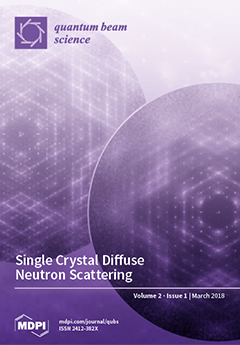1
Kansai Photon Science Institute (KPSI), National Institutes for Quantum and Radiological Science and Technology (QST), Kizugawa, Kyoto 619-0215, Japan
2
Graduate School of Engineering, Osaka University, Suita, Osaka 565-0871, Japan
3
Joint Institute for High Temperatures of the Russian Academy of Sciences, Moscow 125412, Russia
4
Open and Transdisciplinary Research Initiatives, Osaka University, Suita, Osaka 565-0871, Japan
5
P. N. Lebedev Physical Institute of the Russian Academy of Sciences, Moscow 119991, Russia
6
Moscow Institute of Physics and Technology (State University), 9 Institutskii pereulok, Dolgoprudnyi, Moscow Region 141700, Russia
7
Central Laser Facility, Rutherford Appleton Laboratory, STFC, Oxon OX11 0QX, UK
8
Department of Physics, SUPA, University of Strathclyde, Glasgow G4 0NG, UK
9
Naraha Remote Technology Development Center, JAEA, Yamadaoka, Naraha, Futaba, Fukushima 979-0513, Japan
10
The Graduate School for the Creation of New Photonics Industries, Nishiku, Hamamatsu, Shizuoka 431-1202, Japan
11
A. M. Prokhorov Institute of General Physics of the Russian Academy of Sciences, Moscow 119991, Russia
12
Institute of Physics of the Czech Academy of Sciences, v.v.i. (FZU), ELI-Beamlines project, 182 21 Prague, Czech Republic
add
Show full affiliation list
remove
Hide full affiliation list
Abstract
We discuss requirements on relativistic-irradiance (
I0 > 10
18 W/cm
2) high-power (multi-terawatt) ultrashort (femtosecond) lasers for efficient generation of high-order harmonics in gas jet targets in a new regime discovered recently (Pirozhkov et al., 2012). Here, we present the
[...] Read more.
We discuss requirements on relativistic-irradiance (
I0 > 10
18 W/cm
2) high-power (multi-terawatt) ultrashort (femtosecond) lasers for efficient generation of high-order harmonics in gas jet targets in a new regime discovered recently (Pirozhkov et al., 2012). Here, we present the results of several experimental campaigns performed with different irradiances, analyse the obtained results and derive the required laser parameters. In particular, we found that the root mean square (RMS) wavefront error should be smaller than ~100 nm (~
λ/8). Further, the angular dispersion should be kept considerably smaller than the diffraction divergence, i.e., μrad level for 100–300-mm beam diameters. The corresponding angular chirp should not exceed 10
−2 μrad/nm for a 40-nm bandwidth. We show the status of the J-KAREN-P laser (Kiriyama et al., 2015; Pirozhkov et al., 2017) and report on the progress towards satisfying these requirements.
Full article





